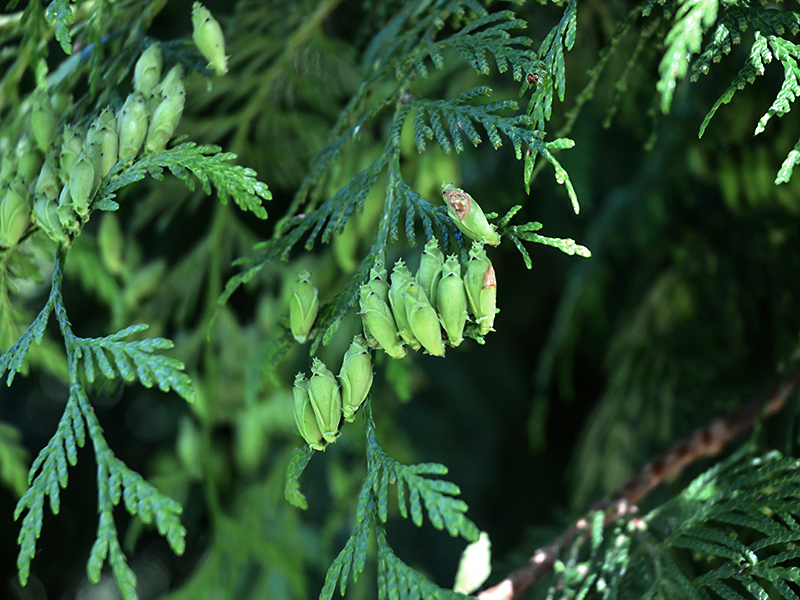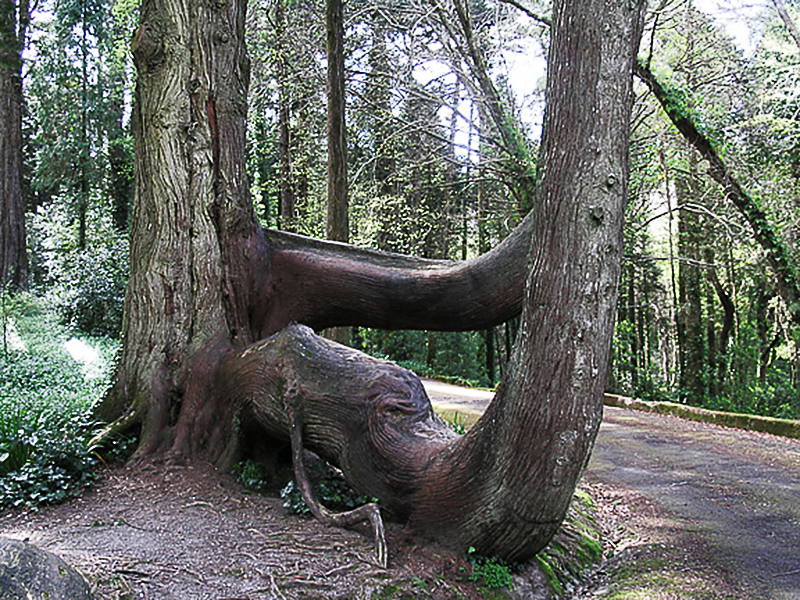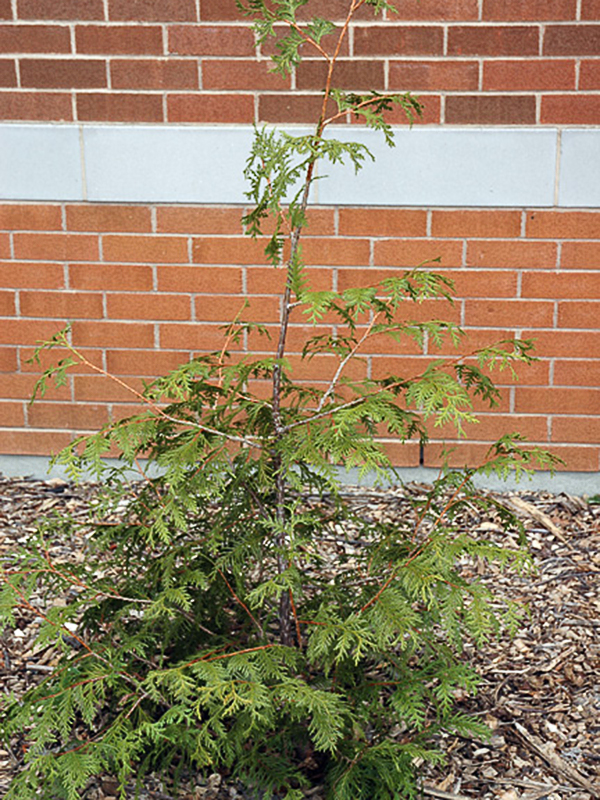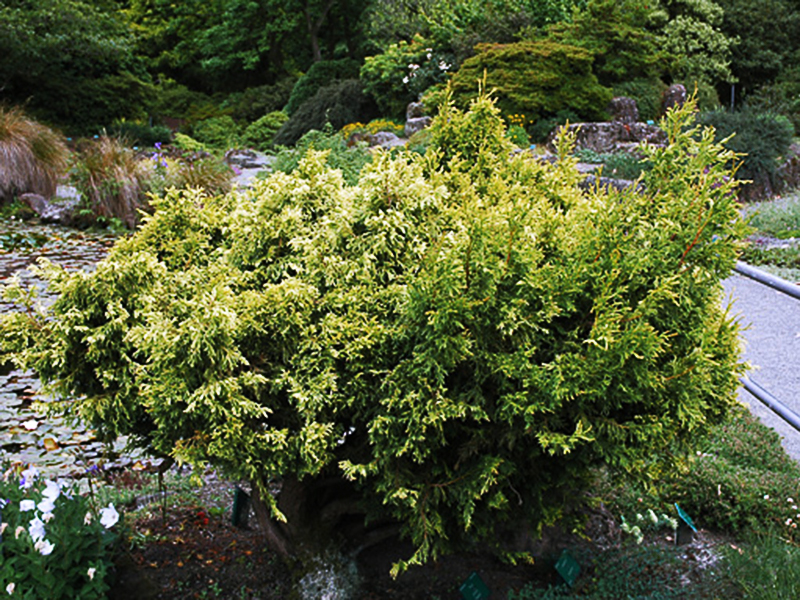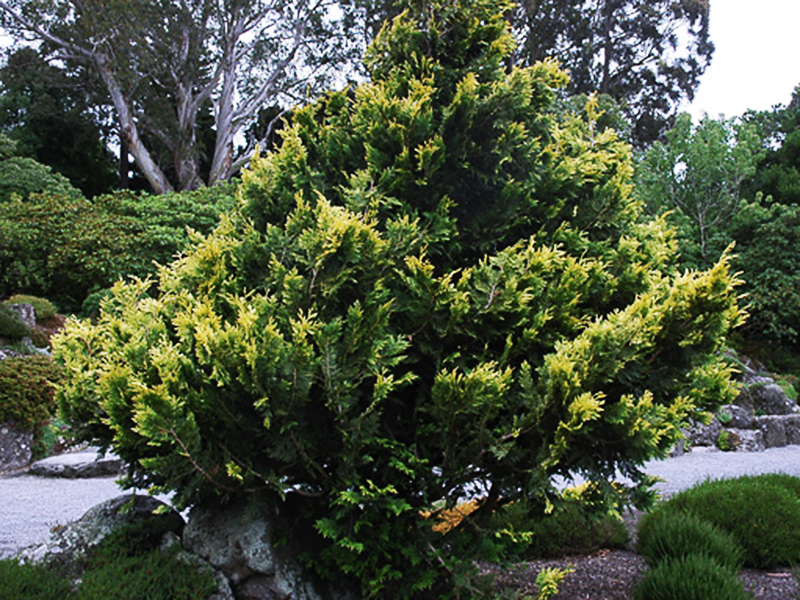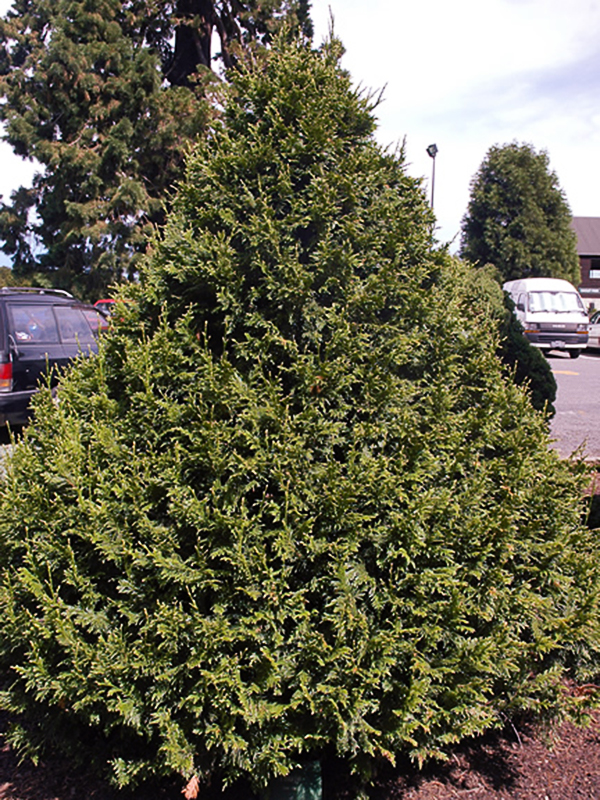| General Description | A very large, narrow pyramidal tree in form that will normally keep its lower branches. It is an imposing evergreen tree with value both in its growth rate and form and in its harvest value for timber. |
| ID Characteristic | Similar leaves to T. occidentalis, but the individual divisions are not as wide and the foliage is darker green. |
| Shape | A narrow pyramidal tree in form that will normally keep its lower branches. |
| Landscape | Most often used for hedges in formal and semi-formal plantings, groupings, windbreaks and screens. |
| Propagation | Stratification in moist medium at 0 - 5°C for 30 - 60 days. Can also be rooted from winter cuttings. |
| Cultivation | Prefers moist, well drained soils, likes high levels of humidity and full sun to partial shade. |
| Pests | Bagworm and heart rot. |
| Notable Specimens | The Niagara Parks Botanical Gardens, Niagara Falls, Ontario, Canada. Westonbirt, The National Arboretum, Tetbury, Gloucestershire, England. |
| Bark/Stem Description | Red on young stems, grey to reddish brown on old trunks, very fibrous and easily peeled. |
| Leaf Description | Leaves are scale-like, with 4 ranks arranged oppositely, each leaf is 1-6 mm long. Similar leaves to T. occidentalis, but the individual divisions are not as wide and the foliage is darker green. |
| Flower Description | Small, difficult to see, with the female having a pinkish colour and the male a yellowish colour. |
| Fruit Description | Small erect cones about 1 cm long, green colour in the summer, turning brown in the autumn. |
| Colour Description | Lustrous dark green. |
| Texture Description | Medium. |
